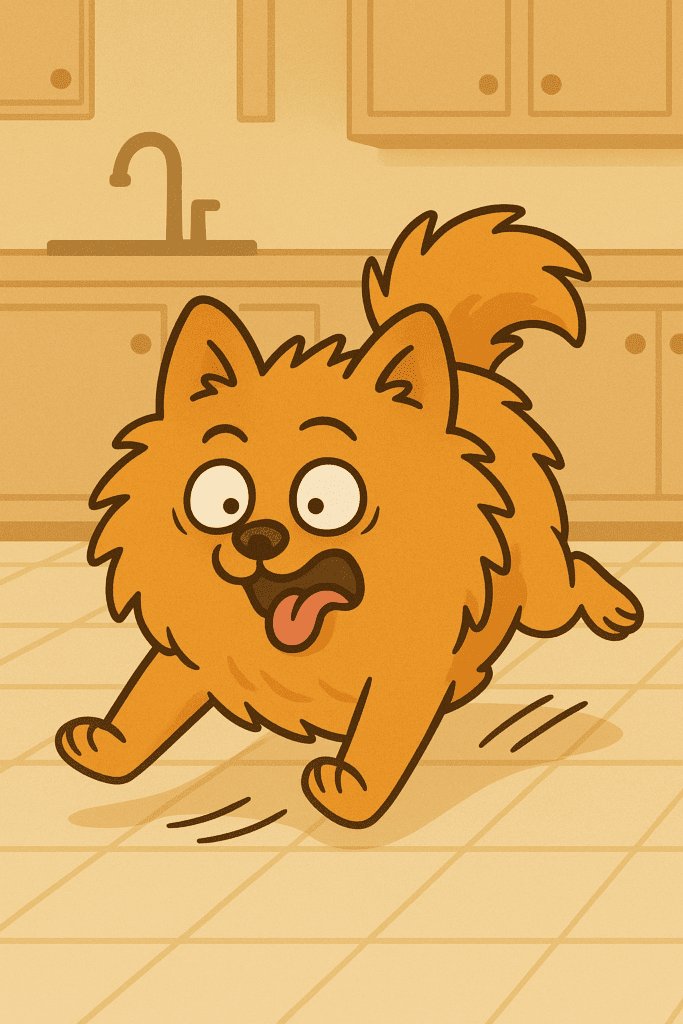If I were trying to sell you socks for my Pomeranian, Archie, I could do it two ways:
1️⃣ The logical, no-personality, spreadsheet-approved way.
2️⃣ The human, hilarious, and slightly ridiculous way, also known as storytelling.
Let’s test it, shall we?
Exhibit A: The Non-Storytelling Way (aka the Sleep Aid of Marketing)
Introducing the Pawfect Fit Dog Socks! Made from 100% cotton, non-slip grip, machine washable, and available in five colors. Sizes XS–L. Protect your floors and your pup’s paws. Order now for $9.99.
And… you’re asleep.
This is what I call brochure brain- when brands communicate like a packing list. It’s fine if you’re labeling boxes in storage. But if your goal is to make people care, laugh, or even remember your name for five seconds after scrolling, it’s a death sentence.
Because no one wakes up in the morning thinking, “You know what I need? A friction-reducing paw covering for my indoor companion animal.”
Exhibit B: The Storytelling Way (aka Archie, The Drama King)
Last winter, my Pomeranian Archie, a 10-pound cloud of judgment and entitlement went skidding across the kitchen floor like Bambi on ice while chasing a squeaky toy that claimed to be “indestructible.” (It wasn’t. RIP, Squeako.)
He landed dramatically, glared at me like it was my fault, and refused to move until I carried him to his bed like a fallen soldier. That’s when I knew: this dog needed socks. Not just any socks – statement socks.
After two prototypes, a meltdown, and one fashion show he definitely didn’t agree to, Archie’s Pawfect Socks were born. Designed for small dogs with big personalities who want to look fabulous while maintaining traction during toy chases and emotional outbursts.
Boom. You’re smiling. You might even picture your own dog. You’ve been transported into a mini-movie starring a dog with more personality than most brand CEOs.
That’s the power of storytelling.
So What’s the Difference?
| Non-Storytelling | Storytelling |
|---|---|
| Lists features | Sparks feelings |
| Sells product | Builds connection |
| Says “buy this” | Says “you’ll love this because…” |
| Sounds like a robot | Sounds like a real human with caffeine and charm |
| Forgotten instantly | Shared, saved, and screenshot |
Why Storytelling Works (Even When You’re Selling Socks)
Here’s what’s really happening behind the scenes:
When you tell a story, the brain lights up like a Christmas tree.
People don’t just hear your words; they feel them.
They imagine Archie sliding across the floor, they relate to the chaos, and suddenly, they’re emotionally invested in something that costs $9.99.
It’s the oldest trick in PR and the newest algorithm-proof strategy in marketing. Because you can’t scroll past something that makes you feel seen, entertained, or even slightly unhinged in the best way.
Let’s Get Real for a Second
Every brand has an Archie-in-socks moment, that one story that captures why you exist, who you serve, and what makes you different. But most brands bury it under bullet points, jargon, and “innovative solutions for scalable growth.” (Please stop.) If your audience can’t retell your story at brunch, you don’t have a story. You have a product sheet.
How to Know If You’re Telling a Story or Just Talking at People
Ask yourself:
-
Does this make anyone feel something (besides confusion)?
-
Could this story be told over wine and still be interesting?
-
Would your dog interrupt you mid-sentence out of boredom?
If the answer to that last one is yes, delete and try again.
The Moral of the Story (and the Sock)
Facts tell.
Stories sell.
Archie’s socks may be small, but the story behind them has legs, four very fluffy ones. And that’s what your brand needs: a little personality, a little humor, and a little dog-level drama.
Because no one remembers “machine washable.” But everyone remembers the Pomeranian who refused to walk barefoot ever again.
Starr Hall
PR Pro, Story Whisperer, and Human to Archie 🐾
(Who still refuses to wear matching socks.)

